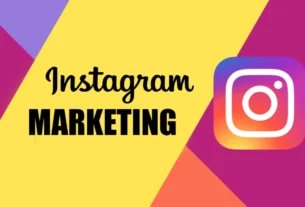Writing content is the backbone of content marketing; thus, the two are closely connected. You’ll need solid writing to nail your message and connect with your audience if you want your content marketing to be successful.
Does Content Writing Really Useful for the brand’s Exposure? Yes, your website’s content is just as crucial as its layout and aesthetics since it influences search engine rankings, boosts website traffic, and positions your business as a market leader. According to a recent report, more than three times as many leads are produced by content marketing than by advertising marketing. Moreover, Small businesses benefit from conversion rates that are six times higher than those of traditional marketing.
In this guide, you will highlight the expert’s most successful and profit-generating content-writing practices.
Let’s Look At 5 Expert Strategies to Make Your Content Effective
Leverage Keywords
Keywords are words and phrases that resemble the search terms used by your audience. Include those keywords in your headlines, subheads, and text since search engines crawl the web looking for stuff that closely matches what consumers are looking for.
- Include your chosen keyword term in the post’s headline and content. Never force keywords into content; they should occur naturally and in context.
- Work synonyms—also referred to as semantic keywords—into your main keyword naturally. When you search for “best new ovens,” you can also get results for “best new stoves” since Google “knows” that certain words and phrases are connected.
- Do you think your language comes across as natural? Did you use keywords and synonyms in the content only where they made sense?
Make Your Content Actionable
Content is most valuable when readers (and potential buyers) can easily see how to apply your advice or fit your product into their life. This means that your material ought to be usable. You may make your writing useful for your audience by including examples to support your advice, whether writing a how-to piece or a product round-up. Don’t simply focus on abstract ideas; also include practical advice.
To make the content more actionable, include an important section such as “How you can apply this today” or “How to make it work for you.” This draws attention to the key takeaway and forces you to provide it in a concise, purified form.
Think About Readability
Readers may become disinterested in your information, no matter how actionable it is, if the material is challenging to skim. B2B audiences are especially affected by this. Getting your argument out quickly and effectively is crucial because B2B audiences are frequently time-constrained.
Use concise words and paragraphs, and stay away from highly technical or jargon-filled language. Ineffective heading structures, jargon, and long walls of text can make website users leave your pages as soon as they arrive.
Here are a few easy tips to increase readability:
- Write shorter paragraphs and sentences whenever you can.
- Add images or bullet lists to large text sections to break them up.
- Make liberal use of headings to direct readers to new parts.
- Consider your audience’s level of industry jargon comprehension before using it.
According to Professional Wikipedia Writers, if you find the process of readability challenging, you may hire professional writers to help refine your text.
Collect Information Outside the Box
It’s still feasible to produce refreshingly original content, although very few things are now entirely original. If everyone simply recycles content from page one of search engine results pages, you will need to explore somewhere else for ideas for new, interesting content. Unconventional research techniques are required here.
On the second or third page, try looking for information from reliable websites. Additionally, books, YouTube videos, and podcasts about marketing can be quite instructive. Although using these techniques might take a little longer than simply reading the top three articles from a search engine, the effort is worthwhile.
Incorporate External Links
Links are indicators to Google that your material is trustworthy and valuable. Additionally, they demonstrate the connections between your website’s contents and those on other websites.
You’ll need something more, such as quotes from reliable third parties if you want your work to differentiate yourself from the copied stuff available online. Incorporating external links in your content helps search engines understand your article and rank it higher on the search engine result page.
Use Strong CTAs
Don’t miss the opportunity to include a call to action at the conclusion of your blog entries, white papers, and case studies (CTA). Although CTAs don’t always have to be sales-oriented, they should encourage your audience to move along in the buying process. Don’t let them waste their time by having them view a movie, read some related articles, download a file, or subscribe to your newsletter.
The key objective of including a CTA is to make it simple for your audience to proceed to the next step. Utilize a CTA that advances the needle (and your lead) to the following stage by carefully considering your marketing objectives.
The Final Brief
If you want website visitors to become happy customers, you need to write quality content. Getting the content out there is just as important as producing high-quality content. Search engines catalogue website content, favoring well-written articles by ranking them higher in search results.




